Spotlight on...
Tosca
Scottish Opera’s 2019/20 Season opened with director Anthony Besch’s legendary staging of Puccini’s Tosca.
Transported in time from the Napoleonic wars to fascist Italy during the 1940s, the production pits singer Floria Tosca and her lover, painter Mario Cavaradossi, against the brutal Scarpia, Mussolini’s sinister Chief of Police.
First staged in 1980, Besch’s production reached its ninth revival in the 2019 performances, which gained five-star reviews and ovations from audiences right across Scotland.
Cast & Creative Team
Cast
Tosca
Natalya Romaniw & Sinéad Campbell-Wallace*
*18 Oct, 2, 7, 21 Nov
Cavaradossi
Gwyn Hughes Jones
Scarpia
Roland Wood
Angelotti
Dingle Yandell
Spoletta
Aled Hall
Sacristan
Paul Carey Jones
Sciarrone
Lancelot Nomura
Creative team
Conductors
Stuart Stratford & Derek Clark*
* 31 Oct, 2 Nov
Original Director
Anthony Besch
Revival Director
Jonathan Cocker
Designer
Peter Rice
Lighting
Robert B Dickson
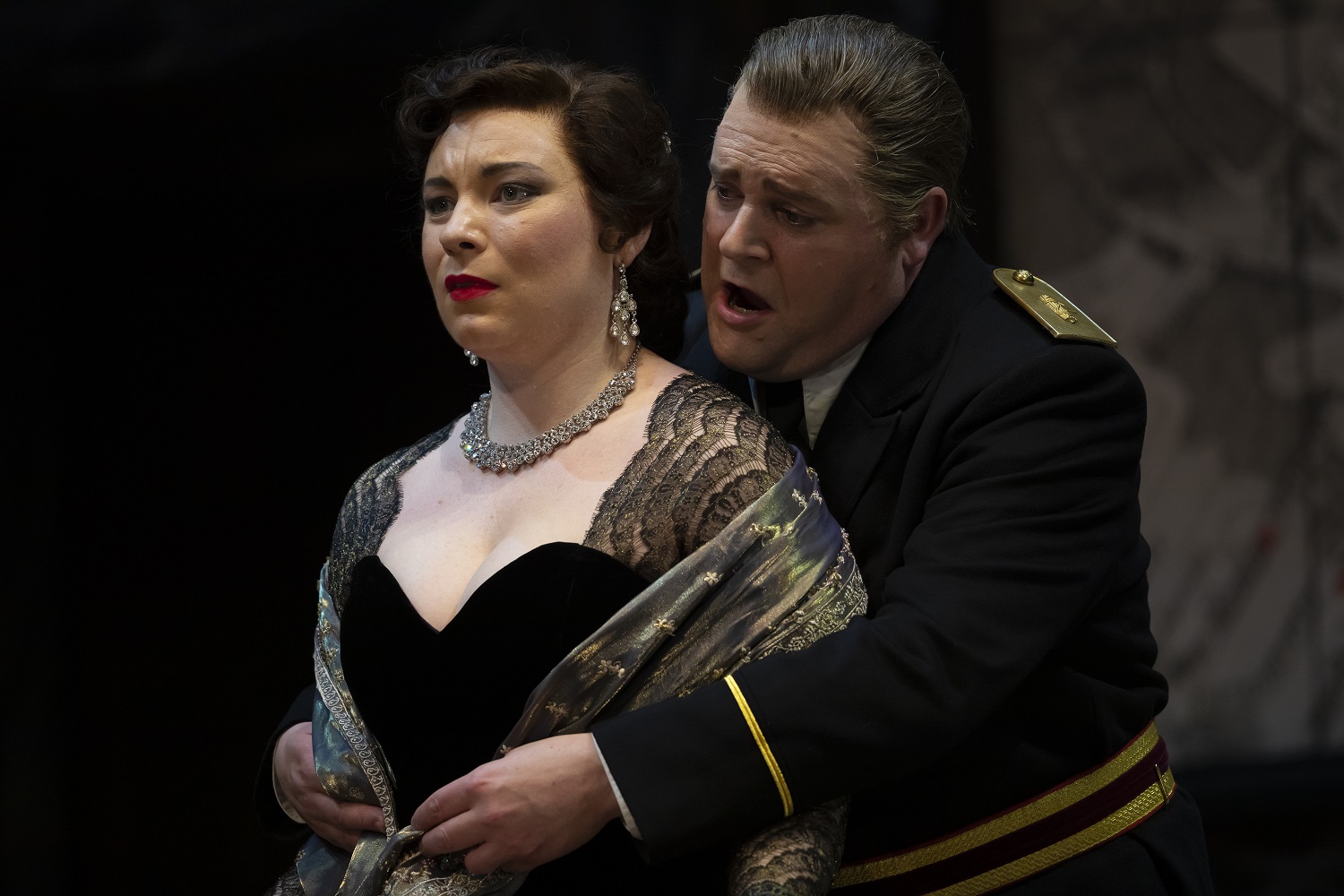
Natalya Romaniw as Tosca and Roland Wood as Scarpia. Scottish Opera 2019. Credit James Glossop. (3)
Tosca 2019. Credit James Glossop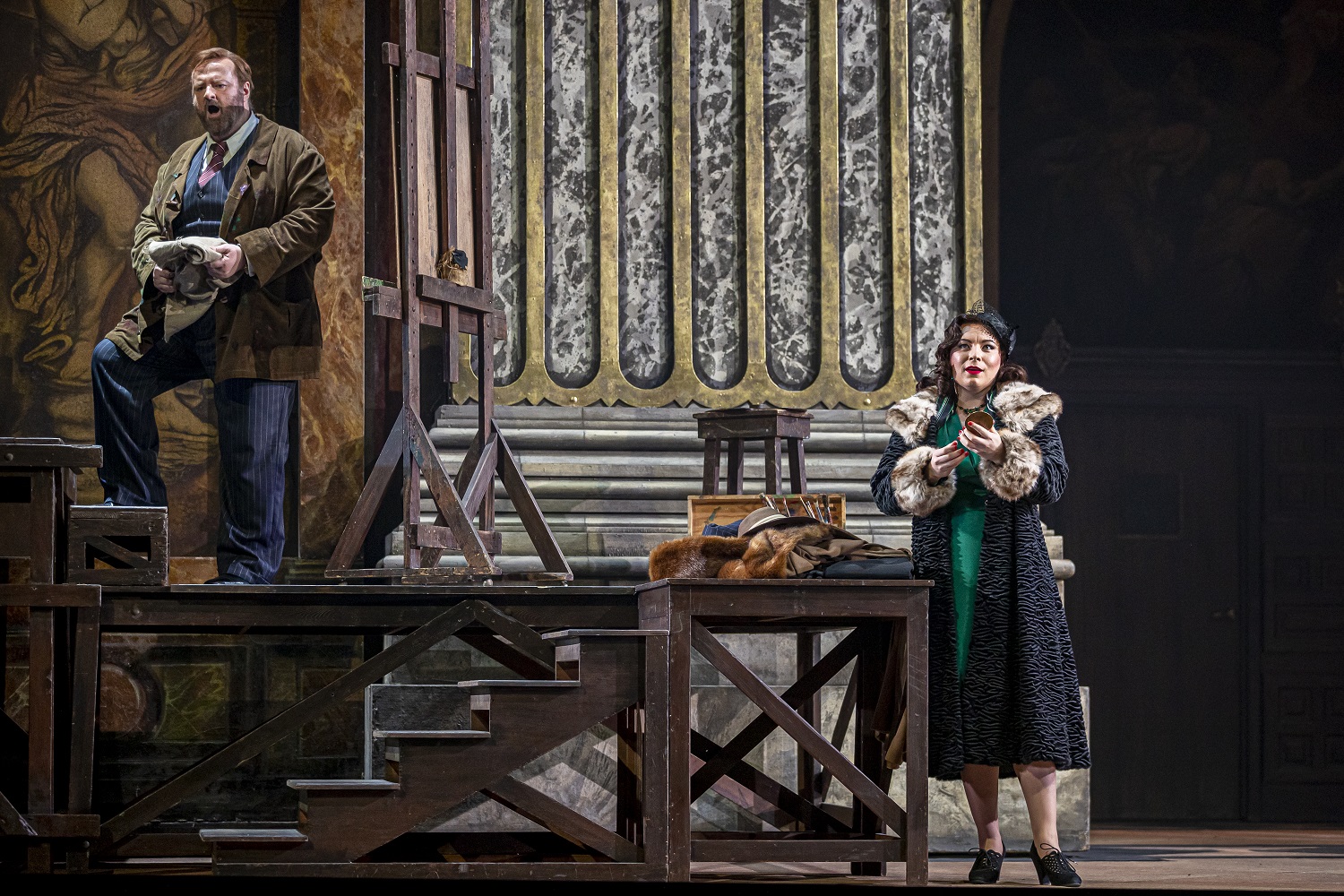
Natalya Romaniw as Tosca and Gwyn Hughes Jones as Cavaradossi. Scottish Opera 2019. Credit James Glossop. (3)
Tosca 2019. Credit James Glossop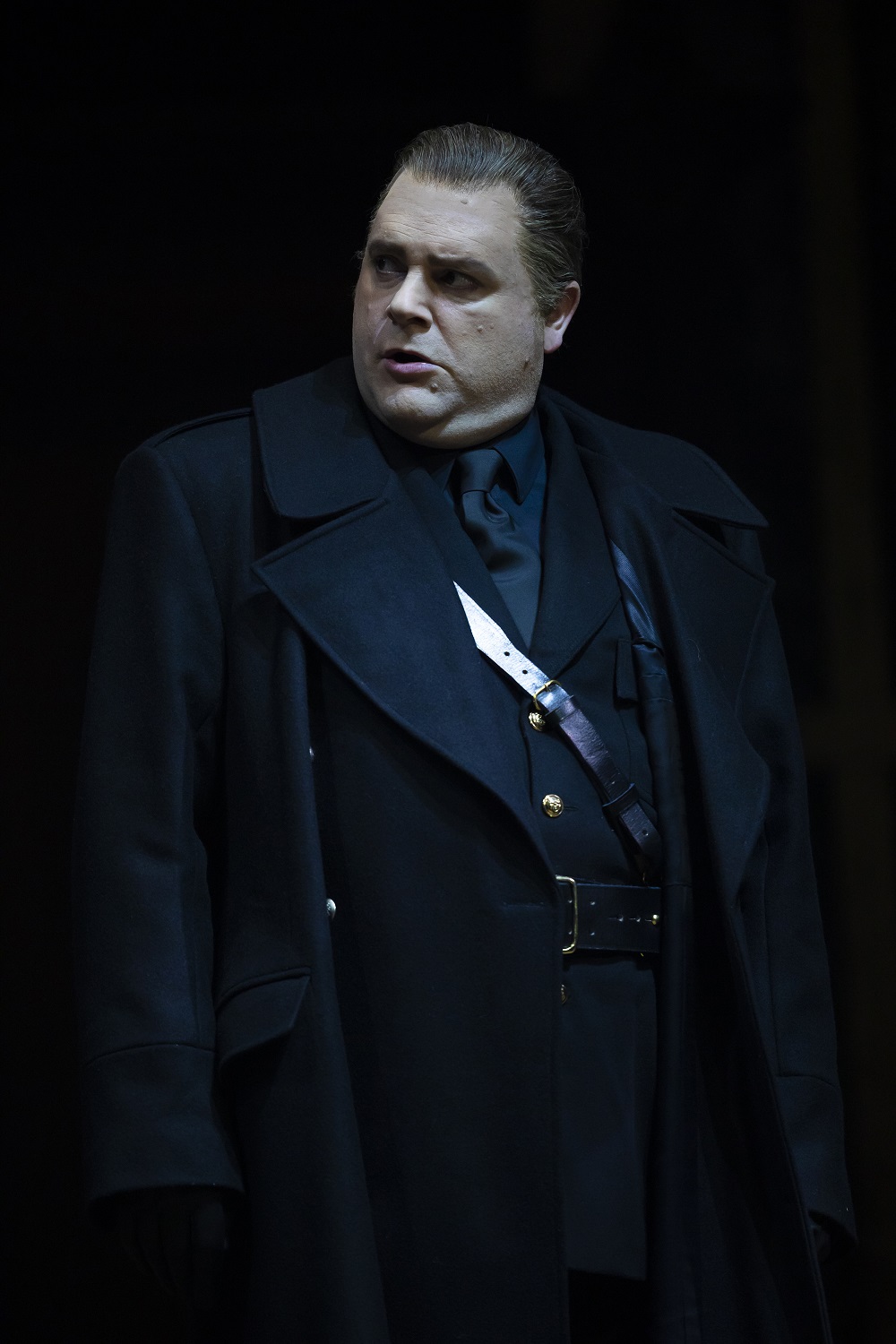
Roland Wood as Scarpia in Tosca. Scottish Opera 2019
Tosca 2019. Credit James Glossop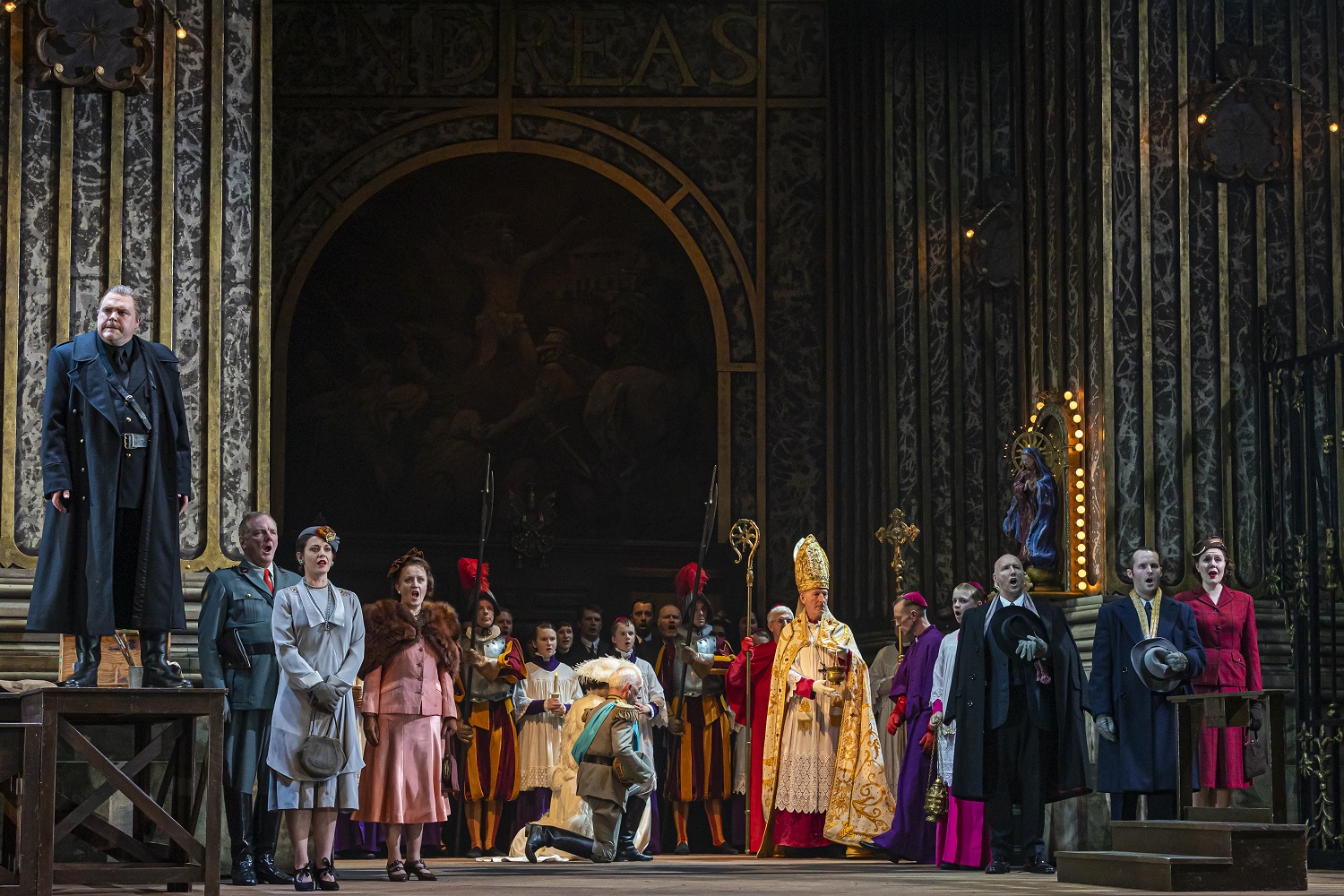
Roland Wood as Scarpia and the cast of Tosca. Scottish Opera 2019
Tosca 2019. Credit James Glossop
Paul Carey Jones as Sacristan in Tosca. Scottish Opera 2019
Tosca 2019. Credit James Glossop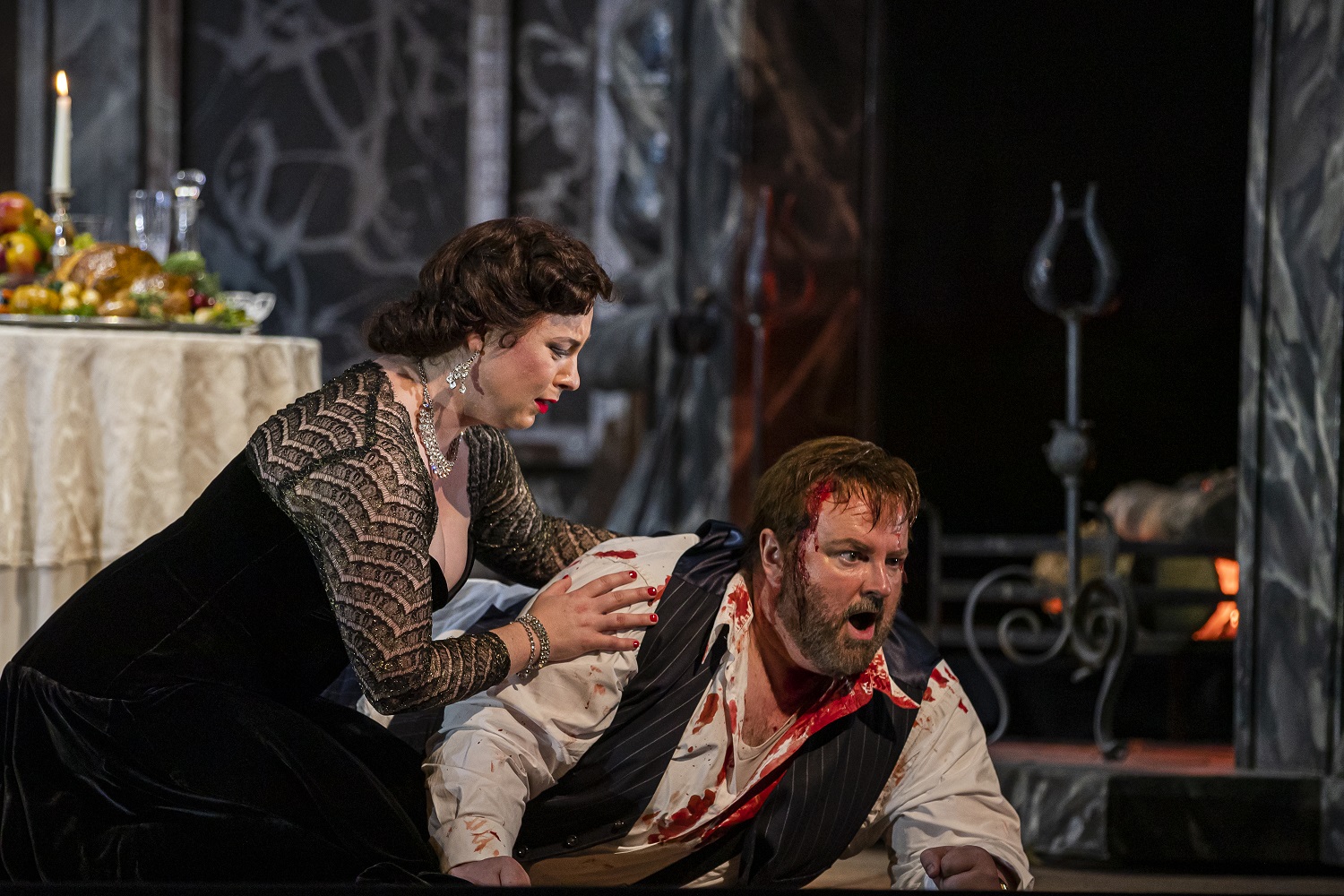
Natalya Romaniw as Tosca and Gwyn Hughes Jones as Cavaradossi. Scottish Opera 2019. Credit James Glossop.
Tosca 2019. Credit James Glossop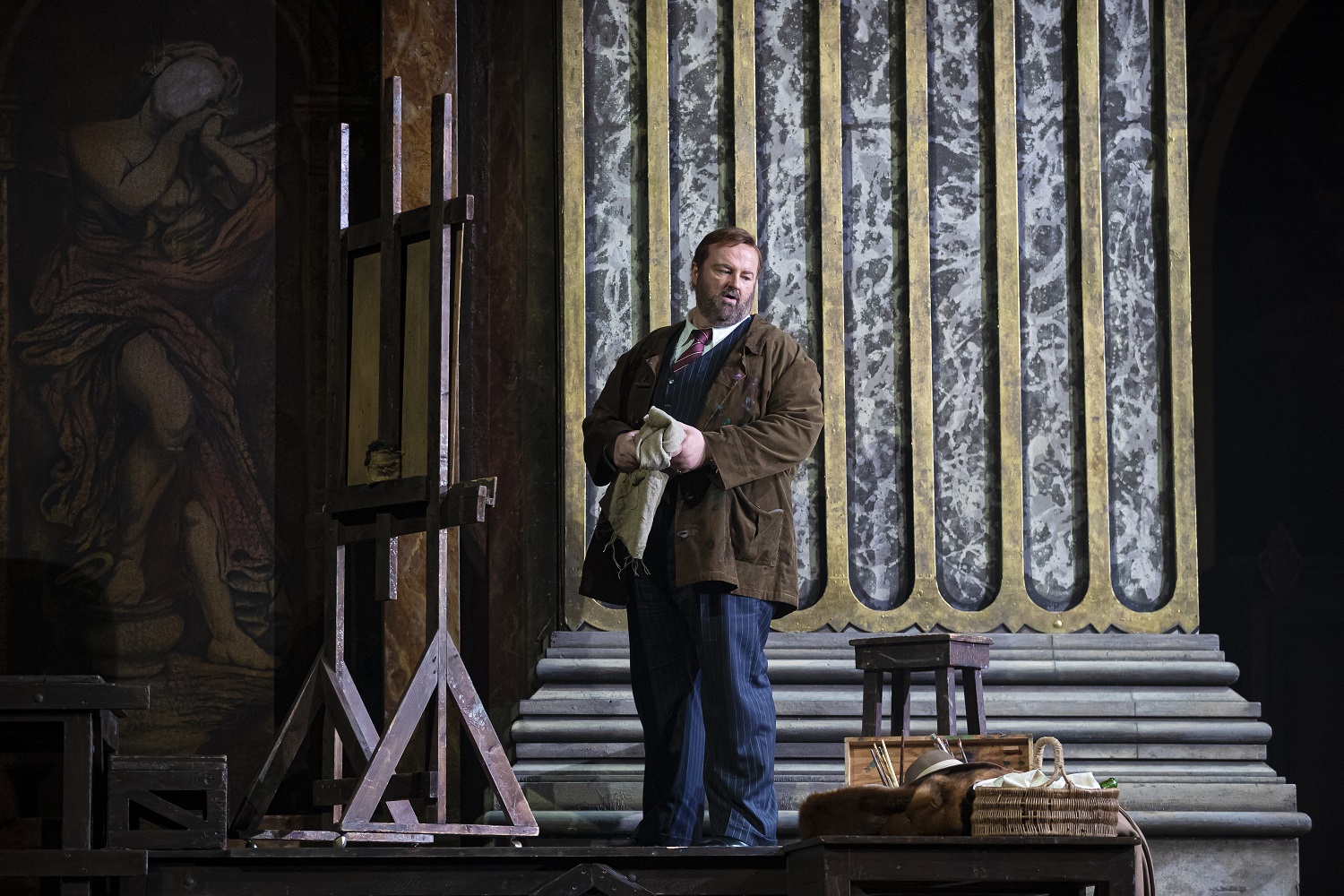
Gwyn Hughes Jones as Cavaradossi. Scottish Opera 2019. Credit James Glossop. (4)
Tosca 2019. Credit James Glossop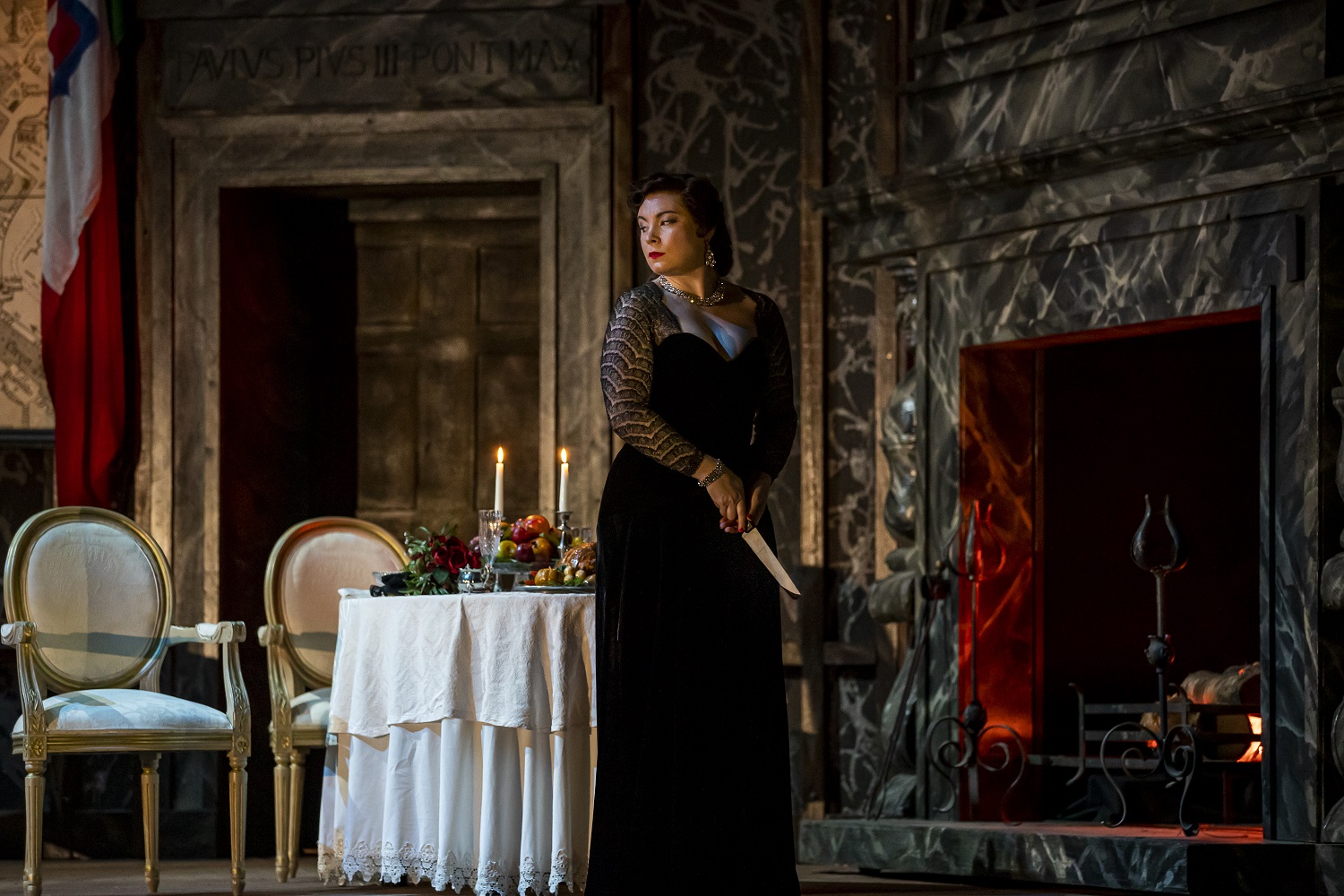
Natalya Romaniw as Tosca. Scottish Opera 2019. Credit James Glossop
Tosca 2019. Credit James Glossop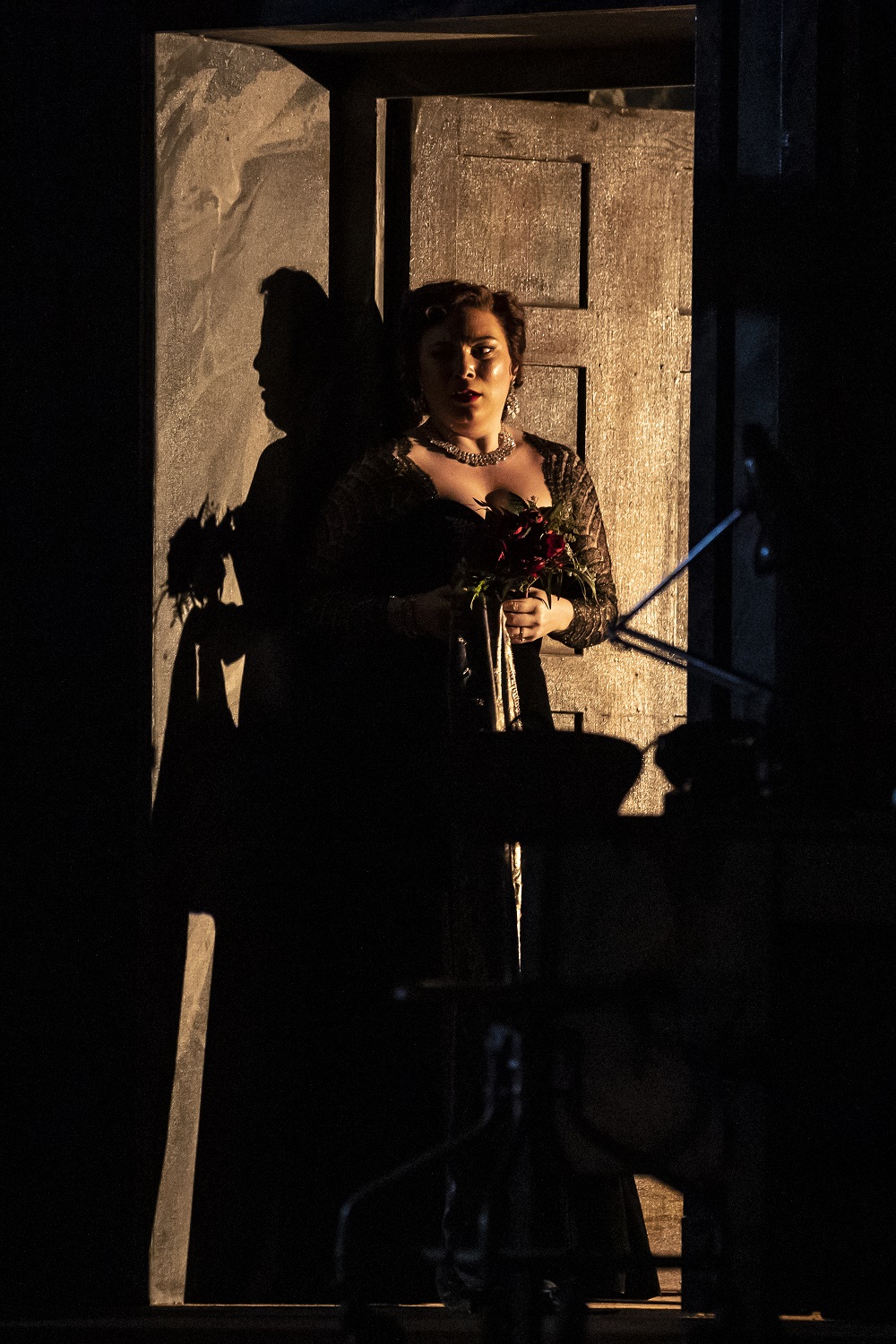
Natalya Romaniw as Tosca. Scottish Opera 2019. Credit James Glossop. (3)
Tosca 2019. Credit James Glossop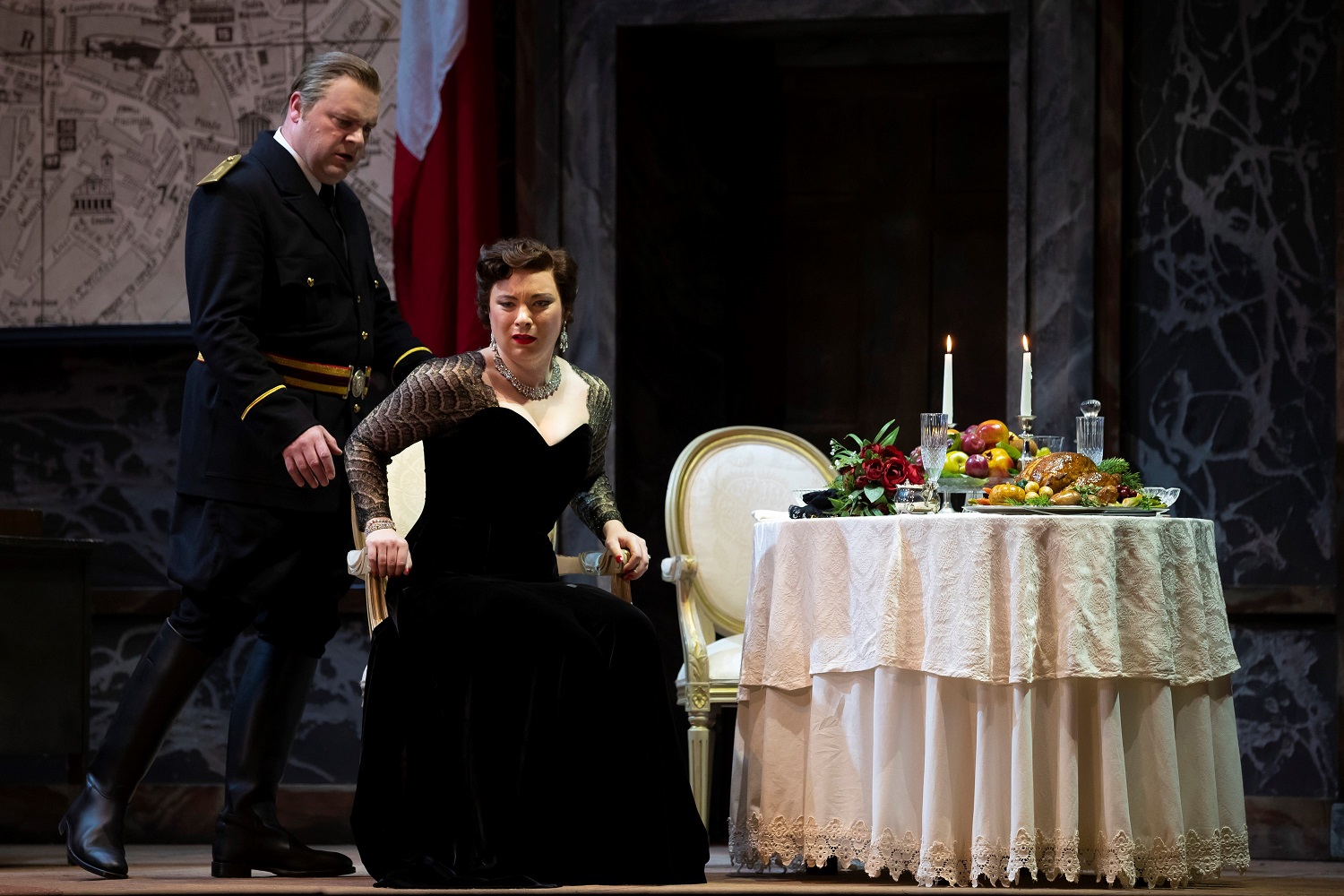
Natalya Romaniw as Tosca and Roland Wood as Scarpia. Scottish Opera 2019. Credit James Glossop. (2)
Tosca 2019. Credit James Glossop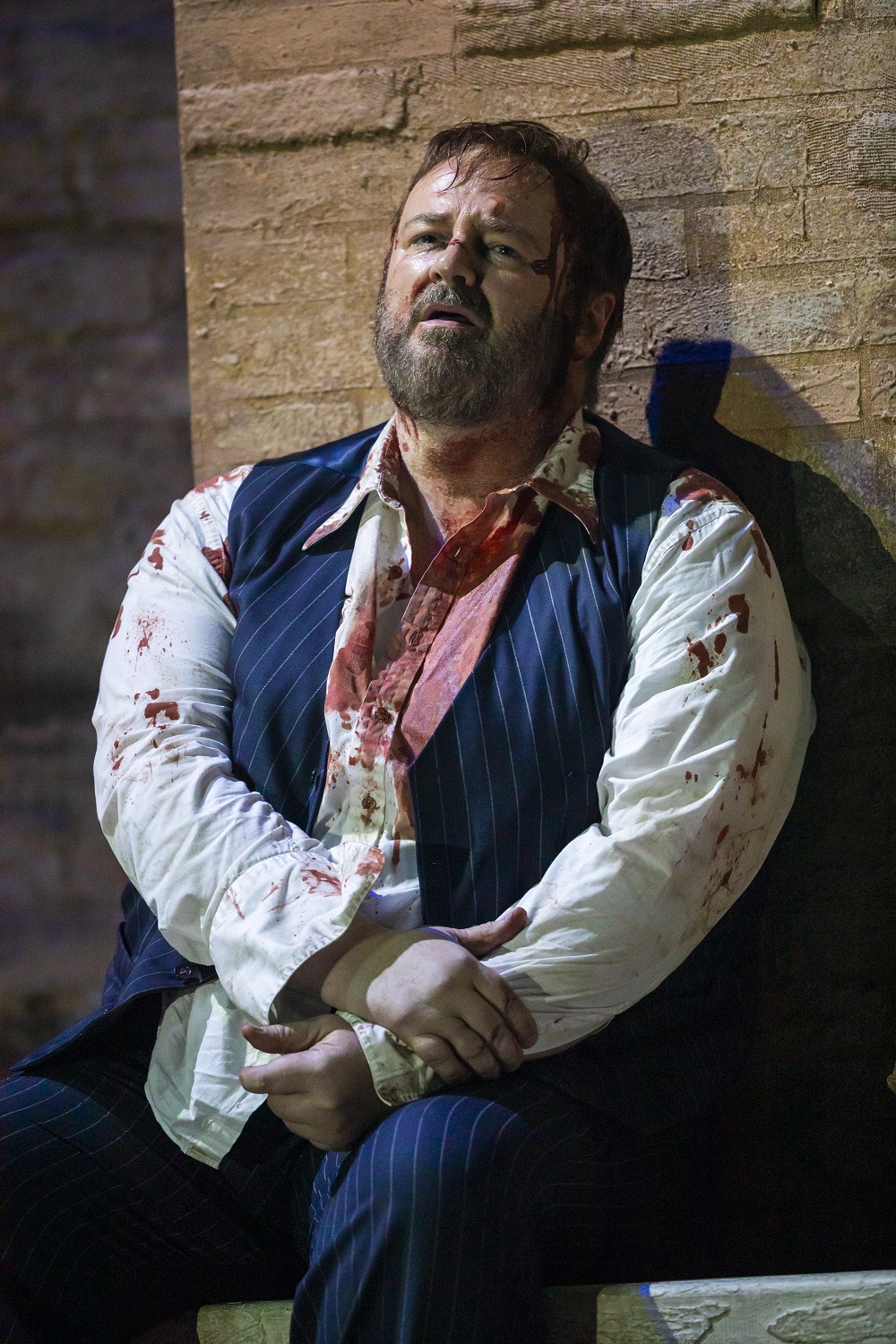
Gwyn Hughes Jones as Cavaradossi. Scottish Opera 2019. Credit James Glossop. (3)
Tosca 2019. Credit James Glossop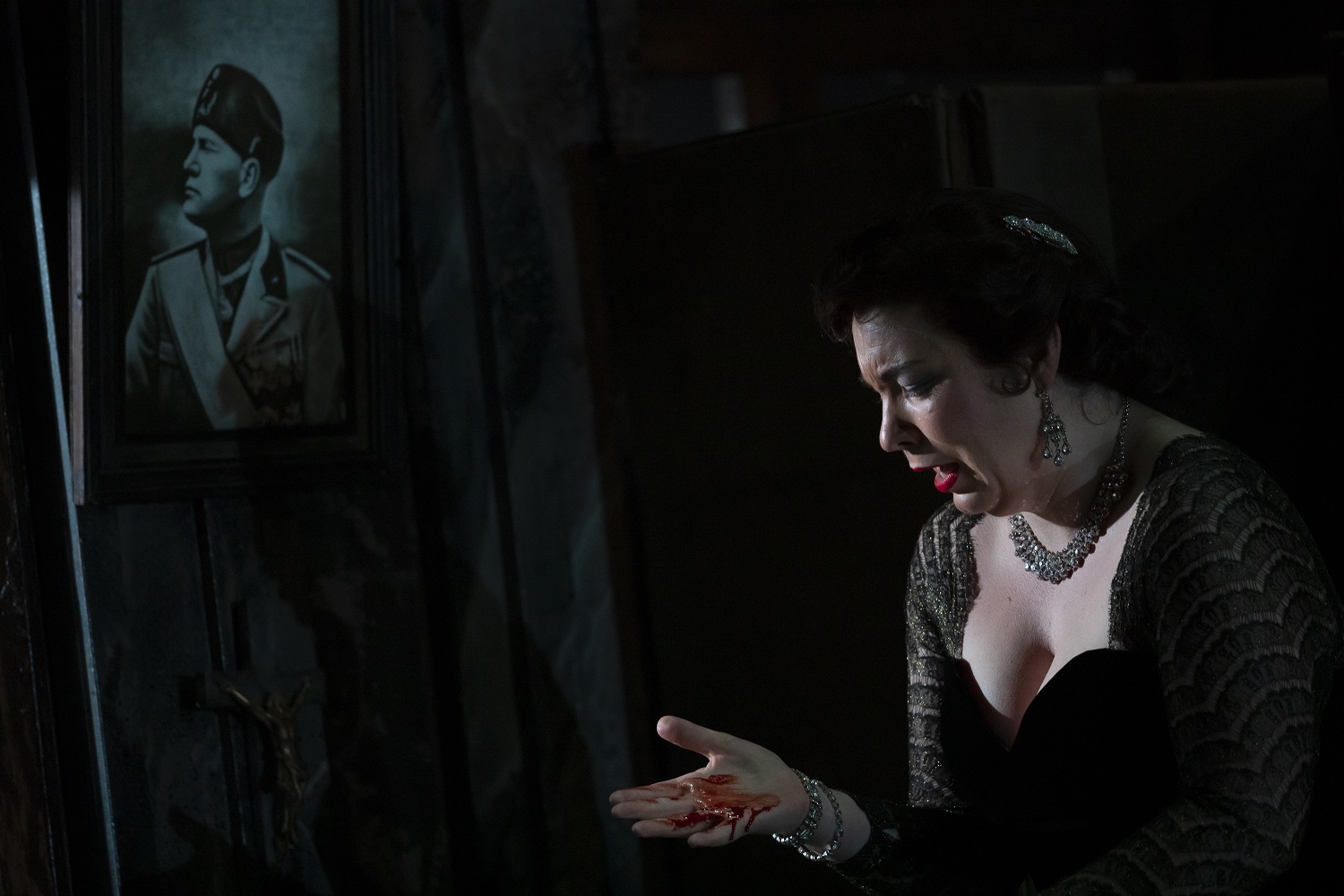
Natalya Romaniw as Tosca. Scottish Opera 2019
Tosca 2019. Credit James Glossop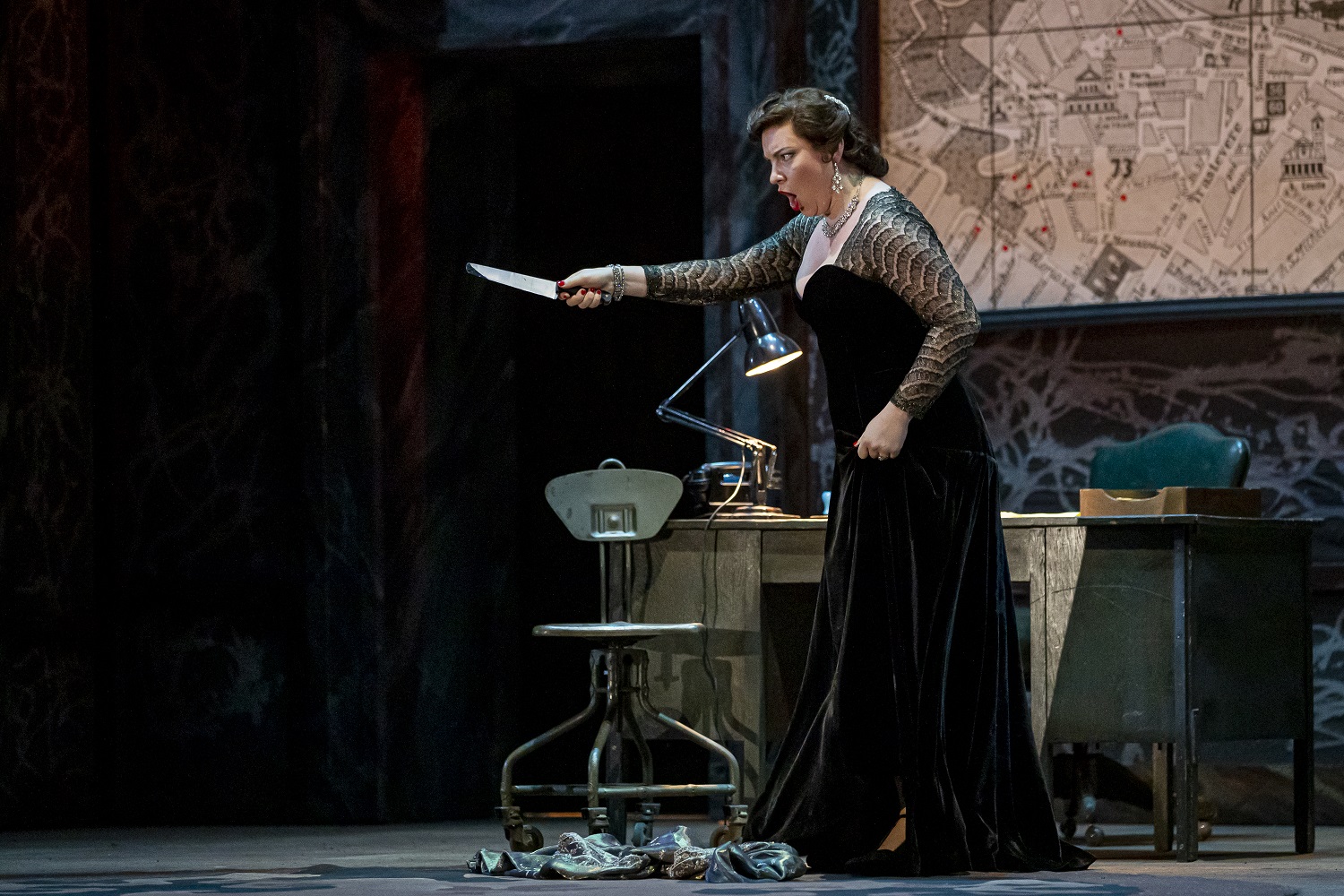
Natalya Romaniw as Tosca. Scottish Opera 2019. Credit James Glossop. (2)
Tosca 2019. Credit James GlossopTosca 2019 | Q&A with Natalya Romaniw Intro
Natalya Romaniw sang the title role in Autumn 2019’s staging of Tosca. We caught up with the Welsh soprano to ask how she approached the iconic role.Tosca 2019 | Q&A with Natalya Romaniw Q1
Q: When you sing the famous aria ‘Vissi d’arte’, does it have the same spine-tingling effect on you that it does on listeners?Tosca 2019 | Q&A with Natalya Romaniw Q2
Q: If you could sing any other character in Tosca, irrespective of gender or voice, who would it be?Tosca 2019 | Q&A with Natalya Romaniw Q3
Q: Are there any other singers or real-life figures who influenced your portrayal of Tosca?Tosca 2019 | Q&A with Natalya Romaniw Q4
Q: If you weren't a singer, what would be your ideal profession?Tosca 2019 | Q&A with Natalya Romaniw Q5
Q: What was the most difficult part of the opera for you, musically or emotionally?Tosca 2019 | Q&A with Natalya Romaniw Q6
Q: What are you doing to survive your quarantine days?Tosca 2019 | Q&A with Natalya Romaniw Q7
Q: Tell us the funniest thing that happened in Tosca rehearsals or onstage?Tosca 2019 | Q&A with Natalya Romaniw Q8
Q: If you could write another ending for Tosca what would it be? Would she live happily ever after?Tosca 2019 | Q&A with Natalya Romaniw Q9
Q: Tell us about your music tastes? Opera or hip hop? Country or heavy metal?BARITONE ROLAND WOOD ON PLAYING TOSCA'S NOTORIOUS VILLIAN, SCARPIA
Tosca was famously dubbed Puccini's ‘shabby little shocker’ by critic Joseph Kerman, partly because of the appalling actions of sadistic chief of police Baron Scarpia, sung by baritone Roland Wood in last October’s staging.
We caught up with Roland, who’s recently returned home from Toronto, Canada where he was due to be singing Amonasro in Aida with the Canadian Opera Company, before the production was cancelled. He is still due to be singing Eisenstein in Die Fledermaus at the Opera Theatre of St Louis over the Summer, but for now he is taking on what he calls his ‘biggest villain role yet’– home-schooling. In between his new-found teaching duties, here he looks back on the pleasures of singing a villain.
'People often ask me what it’s like to play Scarpia, possibly the biggest baddie in the operatic canon. I always give the same reply: for a baritone, it’s just another day at the office…
I spend my life playing sociopaths and lunatics. Whether it’s murdering kings and children (as Macbeth), having people burnt at the stake ('Il Conte di Luna'), hiring assassins who kill my daughter (Rigoletto), or slaughtering my brother in front of my wife (Golaud), I’m happiest on stage when the blood is flowing and the tenor is being mercilessly tortured.
For these reasons, Scottish Opera’s Tosca in 2019 was one of the most enjoyable experiences of my career. The production is fabulous, the cast were a joy to work with, and the orchestra and chorus have never sounded better.
The visceral feeling of the sound cascading downstage towards the audience at the end of Act I in the 'Te Deum' is one I’ll never forget. It was a particular thrill for me to know that my son, Fergus, was one of the choristers, and that we were briefly able to be on stage together. I’ve no idea if we’ll ever get to be in the same show again, so it’s an experience I’ll always cherish.
However, a villain is only as good as his hero, and heroes don't come much better than my fellow singers Natalya Romaniw, Sinéad Campbell Wallace and Gwyn Hughes Jones. I’ve killed Gwyn on stage many times, but it still gives me a thrill having him shot in Act III, particularly when he holds ‘Vittoreeeeeeeeeaaaaaaaa’ for longer than is strictly necessary.
The dramatic intensity and artistry that Natalya and Sinéad brought to their shared role of Tosca often left me genuinely fearing for my life and vital organs. A blunt palette knife has never been so terrifying...
Natalya’s mastery of the role grew with each performance, and nowhere was it more apparent than in her consistent ability to miss the target when throwing the framed portrait of Mussolini. To be able time and time again to miss the overweight, middle-aged baritone lying motionless on the bed three feet from her displayed a level of stagecraft rivalled only by Jonathan Sedgwick’s cigarette smoking in Act III!
The supporting roles in Tosca are often overlooked, but Paul Carey Jones’ superlative impression of Donald Maxwell and Lance Nomura’s moustache both deserve a special mention. Dingle Yandell was there as well. However, we were all forced to play second fiddle to the spectacle that was Aled Hall as Spoletta. Anyone who has shared the stage with Aled will understand what we were forced to contend with – everything from the fetishistic fondling of his revolver, to the extraneous grunts and snorts in the middle of other people’s phrases, to the elegant, understated delivery of his final line, ‘Ah Toscaaaaaahhh, pagherai ben cara la sua vitaahaaaaaa!’ His performance is one I will never forget, however hard I try...'
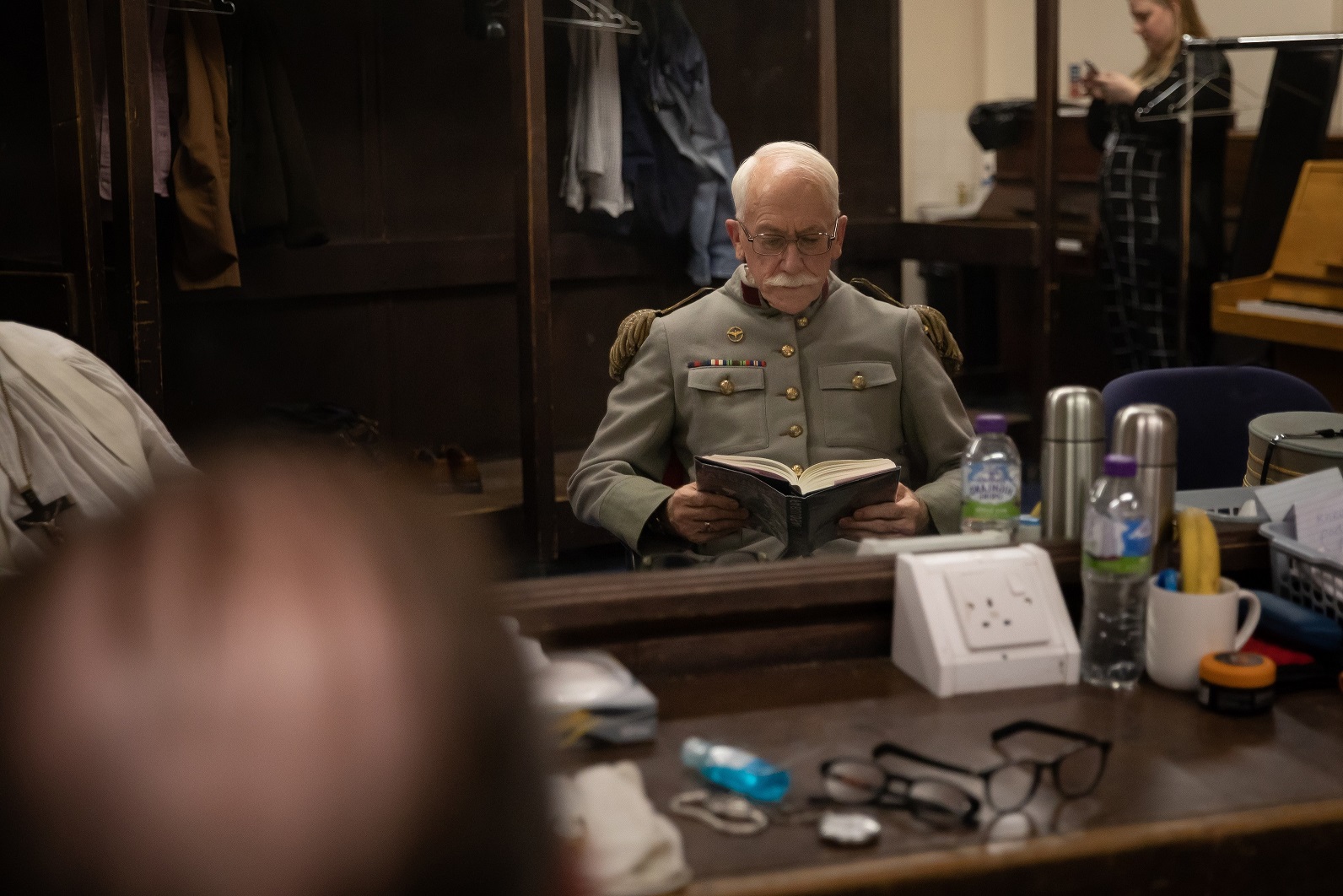
Behind the scenes of Tosca. Scottish Opera 2019. Credit Nadine Boyd. (3)
Behind-the-scenes of Tosca 2019. Credit Nadine Boyd.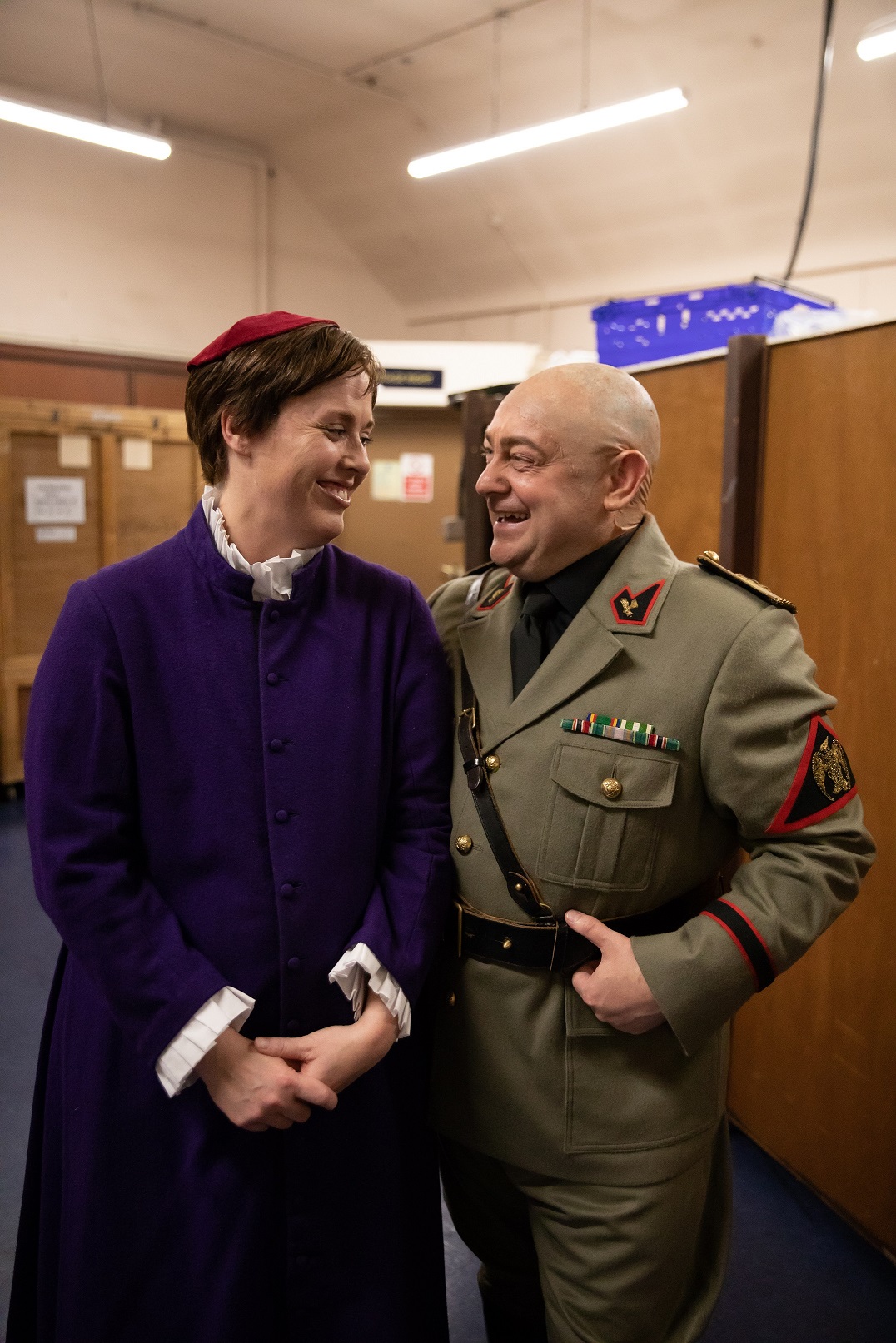
Behind the scenes of Tosca. Scottish Opera 2019. Credit Nadine Boyd. (4)
Behind-the-scenes of Tosca 2019. Credit Nadine Boyd.
Behind the scenes of Tosca. Scottish Opera 2019. Credit Nadine Boyd. (2)
Behind-the-scenes of Tosca 2019. Credit Nadine Boyd.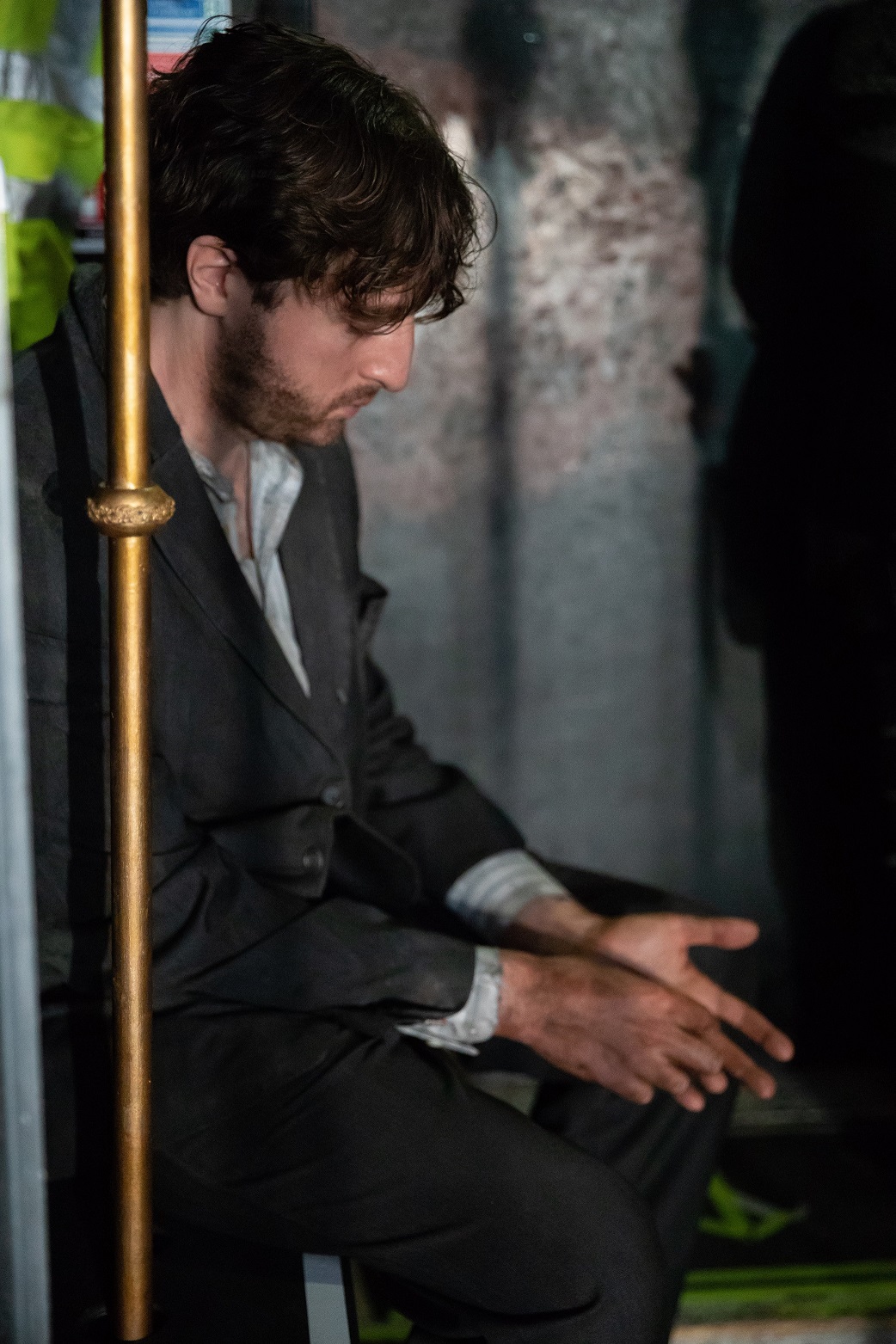
Dingle Yandell (Angelotti) behind the scenes of Tosca. Scottish Opera 2019. Credit Nadine Boyd.
Behind-the-scenes of Tosca 2019. Credit Nadine Boyd.
Scottish Opera Head of Costume John Liddell (Cardinal) behind the scenes of Tosca. Scottish Opera 2019. Credit Nadine Boyd. (2)
Behind-the-scenes of Tosca 2019. Credit Nadine Boyd.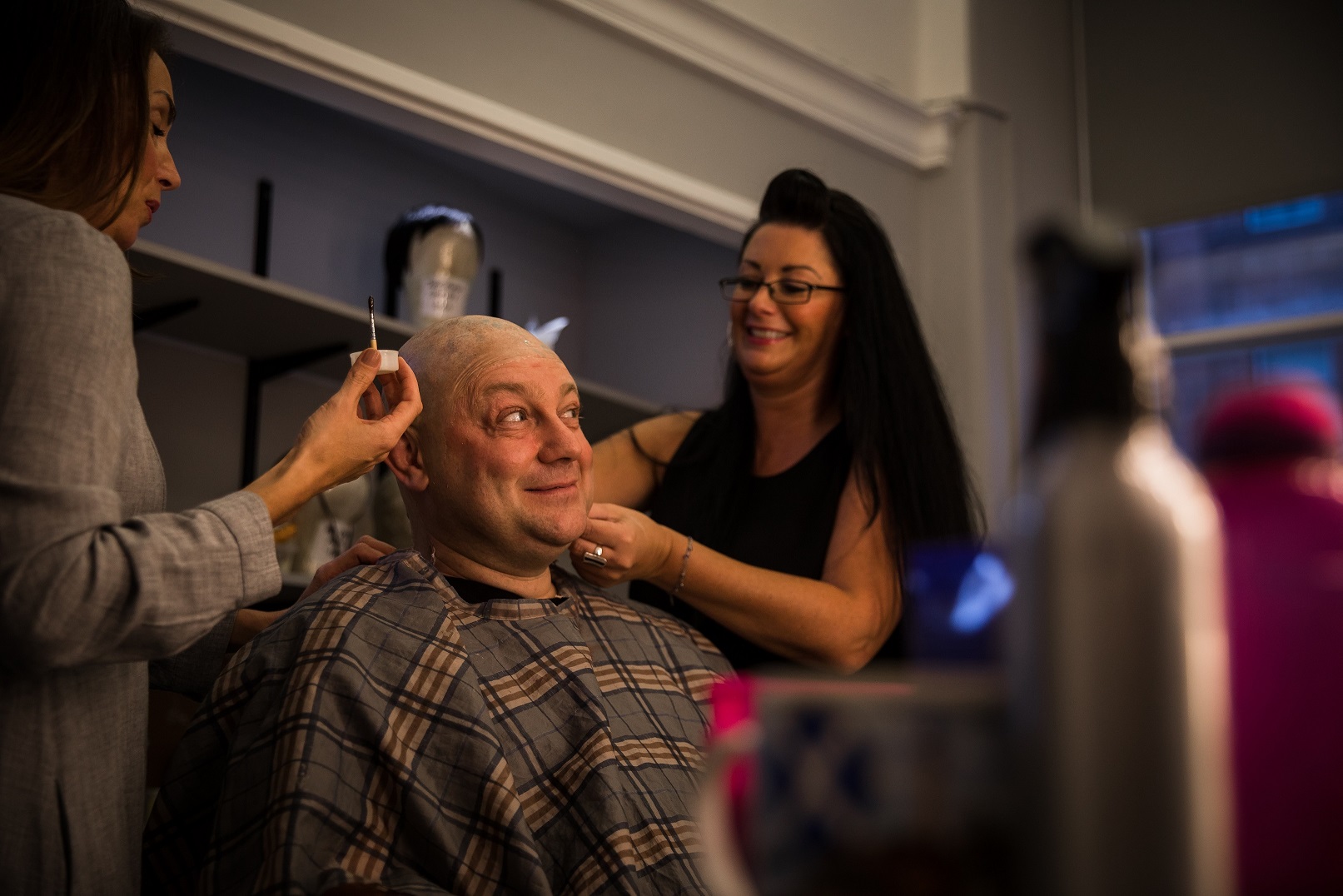
Paul Aitken (Mussolini) behind the scenes of Tosca. Scottish Opera 2019. Credit Nadine Boyd.
Behind-the-scenes of Tosca 2019. Credit Nadine Boyd.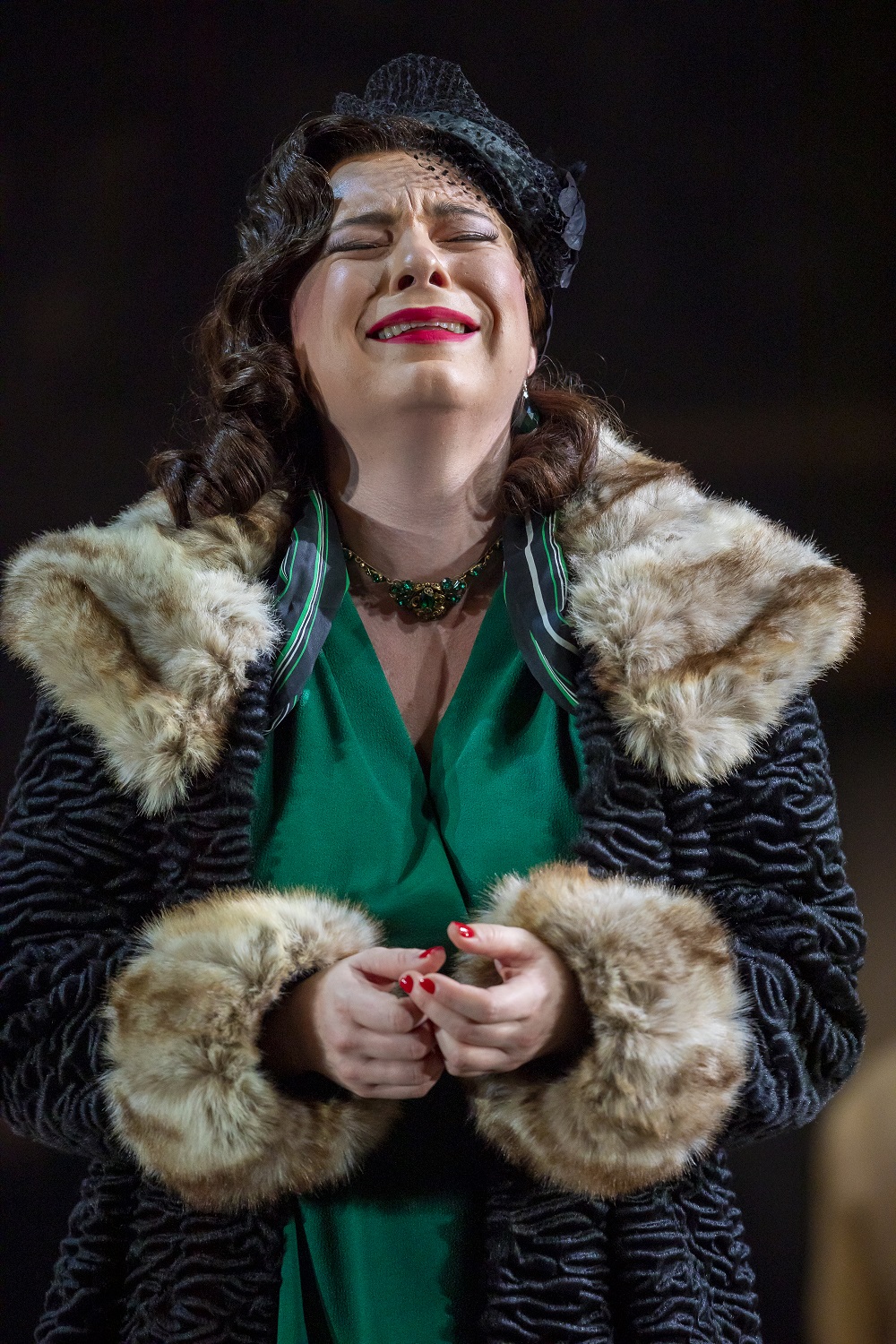
Natalya Romaniw (Tosca) at Pre-Gen. Scottish Opera 2019. Credit James Glossop
Behind-the-scenes of Tosca 2019. Credit Nadine Boyd.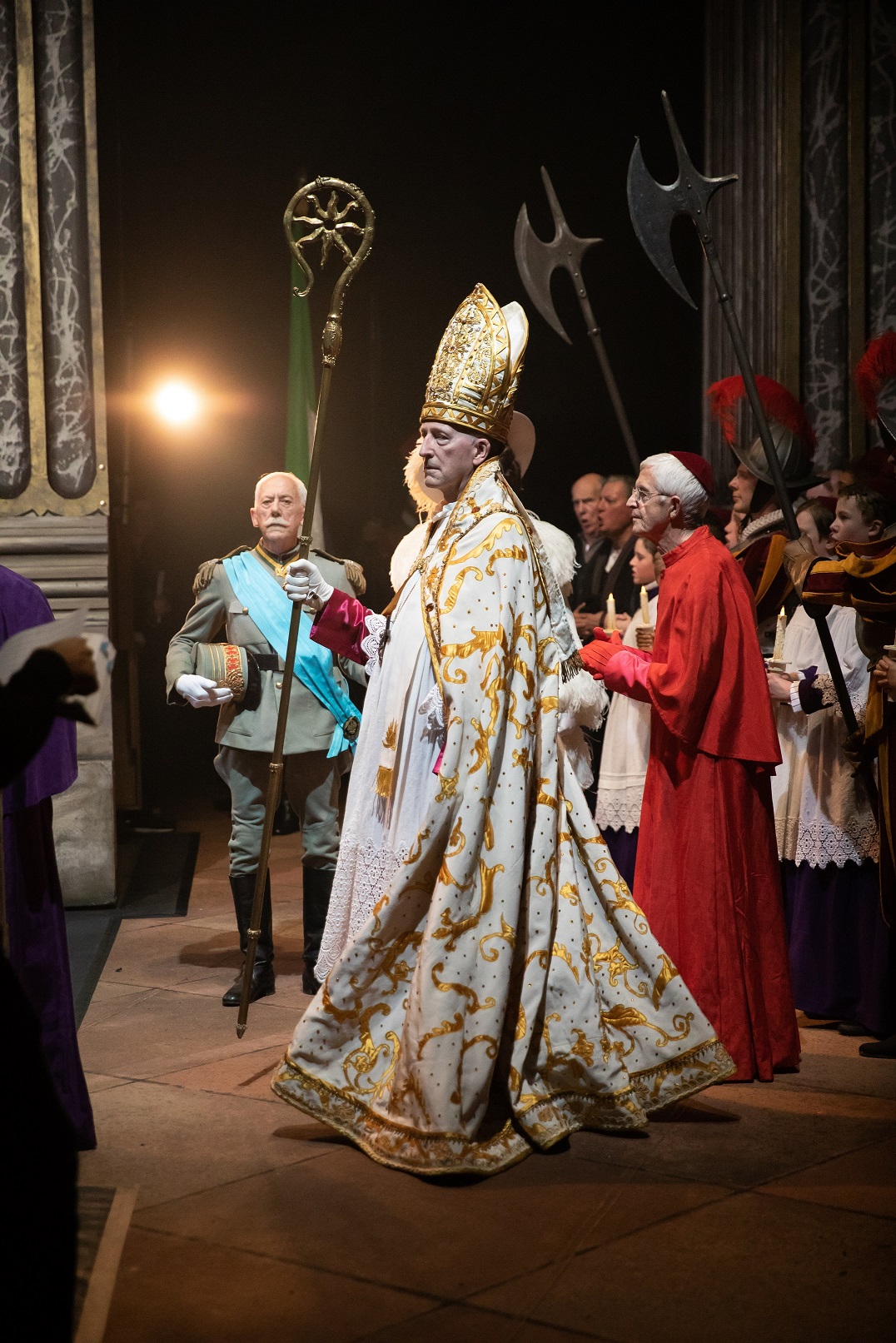
Scottish Opera Head of Costume John Lidell (Cardinal) behind the scenes of Tosca. Scottish Opera 2019. Credit Nadine Boyd.
Behind-the-scenes of Tosca 2019. Credit Nadine Boyd.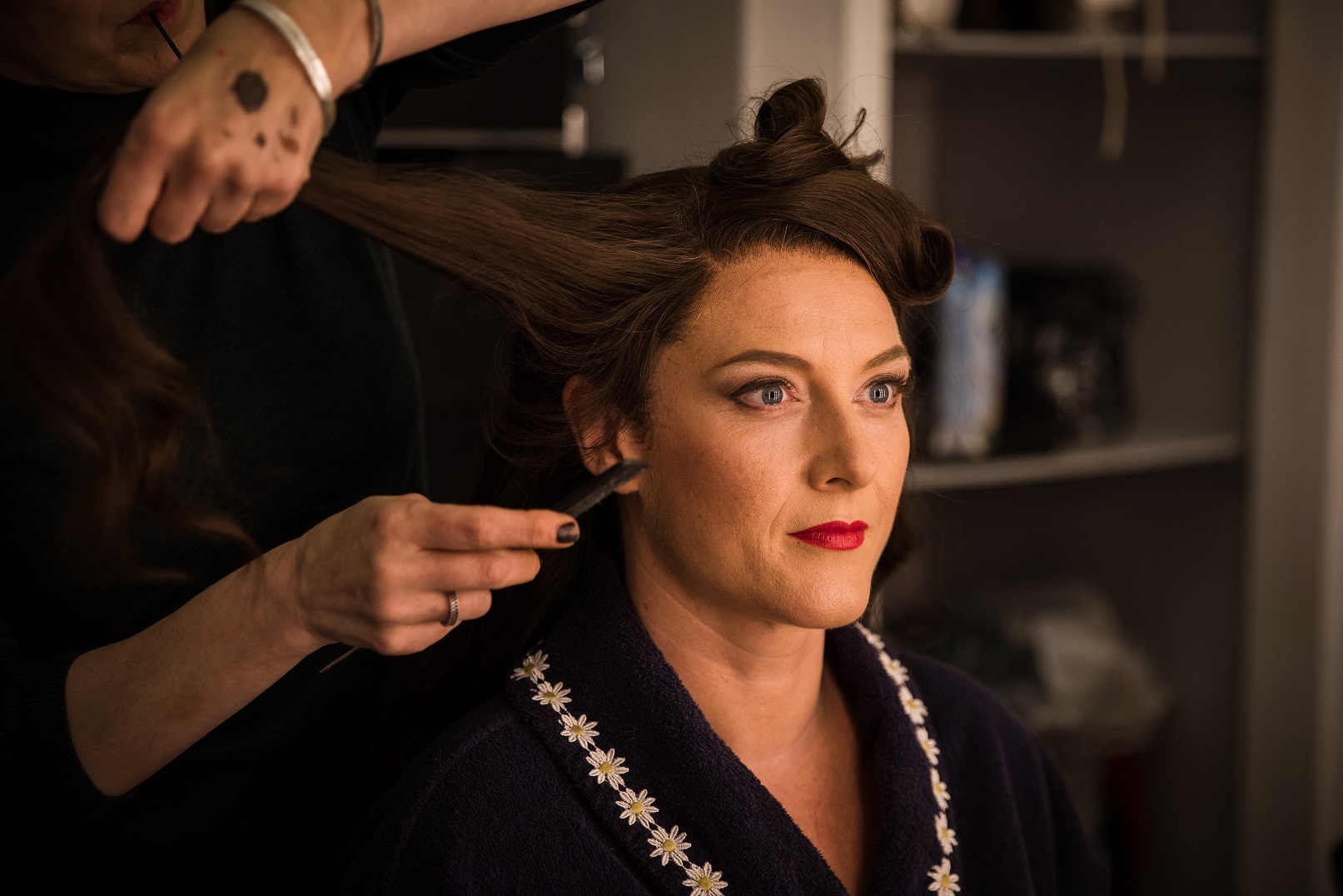
Sinéad Campbell-Wallace (Tosca) behind the scenes of Tosca. Scottish Opera 2019. Credit Nadine Boyd. (3)
Behind-the-scenes of Tosca 2019. Credit Nadine Boyd.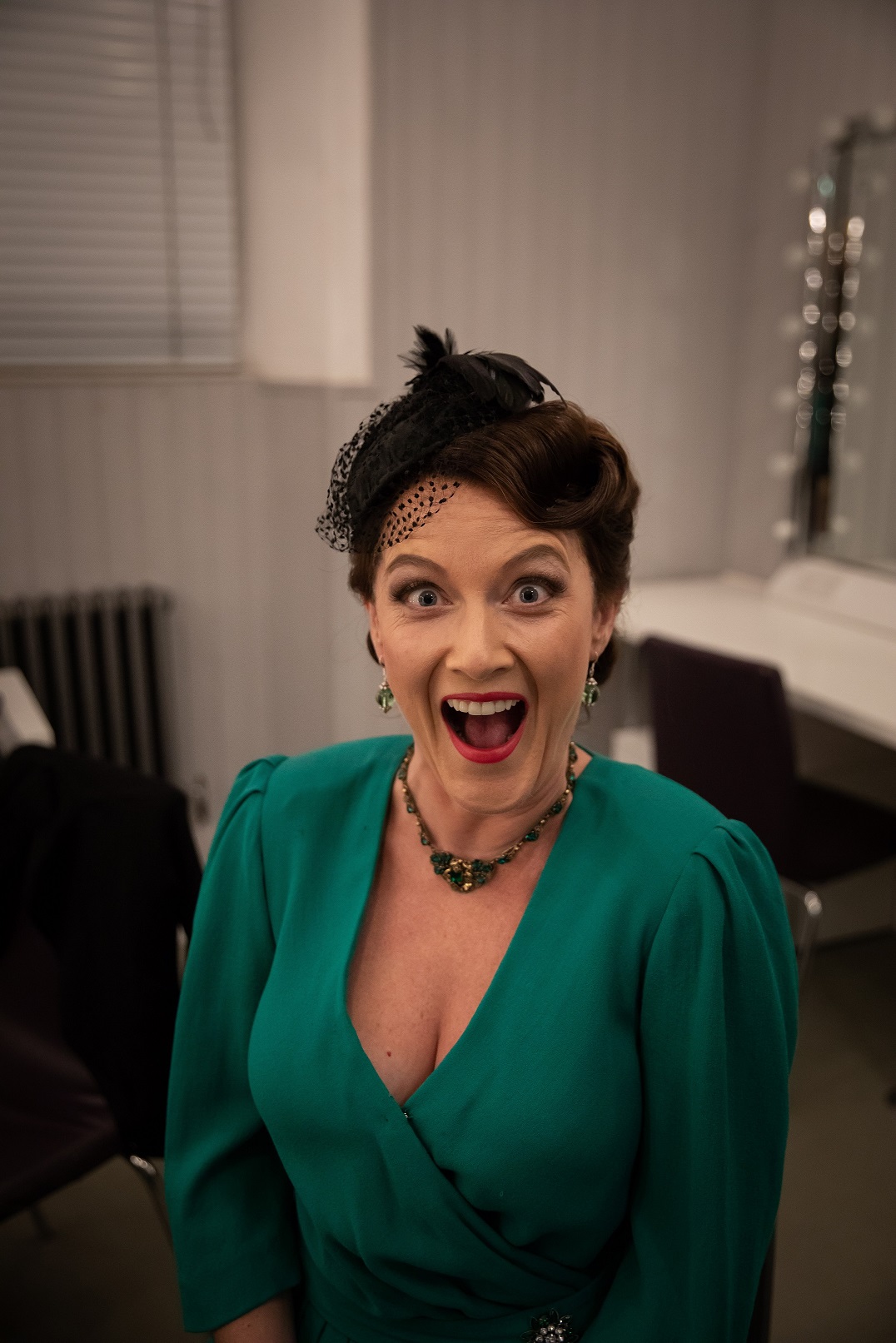
Sinéad Campbell-Wallace (Tosca) behind the scenes of Tosca. Scottish Opera 2019. Credit Nadine Boyd. (1)
Behind-the-scenes of Tosca 2019. Credit Nadine Boyd.From Costume Store to Stage
As Scottish Opera’s Head of Costume, John Liddell has worked on Anthony Besch’s production of Tosca many times since it was first staged in 1980. In 2019, however, he gained a new experience of the production, taking to the stage in the role of the Cardinal. Here he shares his memories of the production.Tosca: An operatic revolution
In Tosca, Puccini broke with past traditions to usher in a new century of operas that spoke directly and uncompromisingly to their audiences, as Susan Rutherford explains in her programme note to the 2019 performances
As Tosca thrusts a knife into Scarpia, she exclaims: ‘Questo è il bacio di Tosca!’ (‘That is Tosca’s kiss!’). Her blade severed not only the life of her sadistic assailant, but also – at least for some critics – a particular image of Italian opera as idealised, poetic entertainment. ‘In Tosca, all is black, tragic, terrible,’ wrote critic Alfredo Colombani in the Corriere della sera following the opera’s first performance on 14 January 1900. By the end of the work, all the major characters are dead: its body count includes two suicides, one murder and an execution.
This newly sombre approach to opera had its beginnings in a play by French dramatist Victorien Sardou. Written for Sarah Bernhardt in 1887, La Tosca (sic) had played to enthusiastic audiences in Paris. Two years later, Giacomo Puccini – then at the beginning of his career – declared to his publisher Giulio Ricordi that in the core of Sardou’s text he had found ‘the opera I need, with no overblown proportions, no elaborate spectacle’.
Yet the project only began to take shape after Puccini had composed the works that established his international reputation: Manon Lescaut (1893) and La bohème (1896). The librettists of both those operas, Luigi Illica and Giuseppe Giacosa, would continue their collaboration with Puccini on Tosca.
A problematic genesis
The development of the libretto was not without its problems, however. Illica and Giacosa became increasingly less convinced than Puccini that Sardou’s play provided suitable material for an opera. Set over a precise 18-hour period during the Bourbon occupation of Rome in 1800, it relates the attempts of a singer (Floria Tosca) to save her lover (the artist and political activist Mario Cavaradossi) from the machinations of the corrupt chief of police, Baron Scarpia.
Puccini might have appreciated the drama’s tautness, but its lack of large-scale set pieces, its mix of impassioned melodrama and realism, and its narrative structure all concerned his librettists. Giacosa complained to Ricordi in 1896 of the ‘absolute unadaptability’ of the play for lyric theatre. Despite its swift pace, he wrote, the plot was merely a ‘monotonous’ cycle of duets. More damning still, the drama consisted of ‘coarse emotional events, without poetry’.
Giacosa reluctantly remained on the team, but disagreements continued. Particular tensions arose when Puccini insisted on removing a philosophical ‘Farewell to Art and Life’ penned by Illica for Cavaradossi at the beginning of Act III (a passage admired by Verdi some years earlier) in favour of the tenor’s agonised, more personal ‘E lucevan le stelle’ (‘The stars were shining’).
Furthermore, Ricordi argued in a letter to Puccini on 10 October 1899 that the lovers’ reunion just before Cavaradossi’s execution ought to have produced ‘a kind of hymn… a hymn of love’, but instead disappointedly consisted of ‘a few bars’ of a ‘fragmentary duet’. Where, the publisher demanded, was ‘that Puccini of noble, warm and vigorous inspiration’ who could respond to the ‘stupendously lyrical moments’ of the scene in a manner to move his audience to tears?
Puccini, however, held fast to his resolve. A conventional duet in those last desperate moments was implausible, he retorted. Tosca’s attention was wholly on preparing Cavaradossi for the supposedly ‘mock’ execution, not on bidding him farewell. And indeed, those hurried exchanges are surely more intensely real and moving than any formal duet.
Such altercations illustrate the way in which a sense of theatre profoundly imbued Puccini’s compositional perspective. While many composers primarily heard drama, he both heard and saw drama. His musical attention to visual detail anticipates much 20th-century cinematic music. And in Tosca, Puccini arrived at a greater sophistication in the use of motif as a subtext of associations between characters and events than in his previous operas. More than 50 motifs thread through the score, the most famous of which is the descending pattern of three chords that opens the opera with compelling stridency, and which is later revealed as a musical embodiment of Scarpia and all he represents – power, terror, cruelty. The interval between the first and third chords, surely not coincidentally, is a tritone, whose dissonance was considered so disturbing in medieval times it was dubbed the ‘diabolus in musica’ (or ‘devil in music’).
Centuries of Roman history
Fittingly, Ricordi arranged Tosca’s premiere for the Teatro Costanzi in Rome. An opera set in Rome at the beginning of one century (1800) would receive its first performance in the same city at the beginning of another (1900). Indeed, the ‘elaborate spectacle’ that Puccini had thought to be happily missing from the play turned out to be Rome itself. No other Italian city displays the visual layering of its long history quite so dramatically. Puccini and his designer, Adolfo Hohenstein, made considerable efforts to reproduce Rome accurately on stage.
They dispensed with Sardou’s choice of the Sant’Andrea al Quirinale (which does not have a chapel) in Act I, in favour of the lavish interior of Sant’Andrea della Valle, designed by Gian Lorenzo Bernini in 1658. Curiously, as the opera progresses, its settings move further back in time, rooting the spectators ever deeper in Rome’s history. The Palazzo Farnese, one of Rome’s grandest palaces – designed around 1517 and containing architectural features later added by Michelangelo – provided the location for Act II. The final act takes place in the Castel Sant’Angelo, an imposing reminder of ancient Rome on the banks of the Tiber. Commissioned in the second century CE by the Emperor Hadrian as a mausoleum for himself and his family, it subsequently became a fortress and a prison until 1901 (just a year after Tosca’s premiere), when it was turned into a museum.
Hohenstein’s designs made imaginative use of these environs. But life beyond the immediate confines of those settings also intrudes via ‘noises off’, sometimes establishing mood, at other times driving the action. In Act II, for example, Scarpia’s room in the Palazzo Farnese is filled with the music drifting up from the concert below. When Cavaradossi is brought in for questioning, Scarpia interrogates him against the background of Tosca’s singing. And when it’s Tosca’s turn to be interrogated, Scarpia employs the added pressure of the torture audibly inflicted on Cavaradossi in an adjoining room.
Act II’s horrors of torture and death are contrasted with the serene opening of Act III, just before dawn: outside the castle walls, a shepherd boy is heard singing. As his voice recedes, Rome’s bells sound the call to morning prayers. Puccini made a special trip to the city to get these sounds exactly right. There are 11 different bells in total in his scoring. The lowest is pitched in E, reproducing the sound of the Great Bell (‘il Campanone’) at St Peter’s Basilica. In effect, Puccini expands the opera’s aural perspective, enabling us to hear into the distance, beyond the stage picture.
Assertiveness and murder
In terms of dramatic action, Tosca was akin to a ‘rescue opera’, the genre that had emerged in the wake of the French revolution. Its twist, however, is the sheer malevolence of Scarpia. He does not merely desire Tosca but revels in her resistance, proclaiming that ‘violent conquest’ has a stronger flavour than ‘easy surrender’. Men who demand a sexual price for helping a woman (usually a matter of sparing her lover or family member from death) had long stalked their way through Italian operatic history. Often, their targeted victims turn their anguish on themselves: Leonora in Verdi’s Il trovatore chooses poison; Gioconda in Ponchielli’s La Gioconda avoids Barnaba’s clutches by stabbing herself. Tosca, however – embodying ideas of female liberty aroused by the French Revolution from the time of the opera’s setting, as well as the figure of the ‘nuova donna’ (‘new woman’) circulating in Italy during the opera’s inception – takes a more assertive line.
Women die but rarely kill in 19th-century Italian opera. Those few who do so usually commit their violence off stage, as in Donizetti’s Lucia di Lammermoor (1835) and Maria di Rudenz (1837), or Verdi’s Il corsaro (1848). (A notable exception is Odabella’s politically nuanced centre-stage dispatch of Attila in the final bars of Verdi’s Attila of 1846.) Such women, unlike their male counterparts, were expected to demonstrate repentance for the taking of a life – even when their actions might occasion the audience’s understanding. Gulnara (Il corsaro), for example, kills the man who enslaved her in his harem and now threatens her life and that of the man she loves. Writing to the soprano Marianna Barbieri-Nini before the opera’s premiere, Verdi was careful to stress that in the final terzetto she must never forget that she has ‘killed a man’ nor cease to demonstrate her remorse.
Half a century later, however, Tosca’s placing of a crucifix in Scarpia’s dead hands and her framing of his body with candles (a mime created by Bernhardt in the theatrical version and retained by Puccini) are far more ambiguous gestures. She asks no pardon for his death. Rather, it is she who now pardons him for his crimes (‘È morto. Or gli perdono!’, ‘He is dead. Only now can I forgive him!’). The laying out of his body in religious fashion is an acknowledgement of the rites of her faith, not an expression of regret.
But Scarpia’s signature on the warrant for Cavaradossi’s execution enables him to continue his torture of the lovers from beyond the grave. In fact, their double tragedy distorted one of the oldest of operatic conventions: the prison scene. In his satire on Italian opera (Il teatro alla moda, 1720), Benedetto Marcello had advised poets that:
‘If a husband and wife are imprisoned together, and if one of them should have to die, it is absolutely necessary to have the other stay alive so that he or she can sing a cheerful aria. This will raise the audience’s morale and make them realise that it is all only make-believe.’
In Tosca there is no such sop to an audience’s sensibilities. Had he had his way, however, Puccini would have ended things differently. In a meeting with Sardou, he argued for Tosca’s collapse into crazed grief instead of death:
‘This morning I spent an hour at Sardou’s… He wants that poor woman dead at all costs. Now that Deibler [France’s last executioner] has had his day, the Magus [Sardou] wants to take his place! He accepts the madness, but would have her faint away, die exhausted like a bird.’
In the end, Puccini capitulated. Tosca leaps in defiance of the pursuing soldiers, with her last cry of ‘Scarpia, avanti a Dio!’ (‘Scarpia, we shall meet before God!’) making it clear that she will hunt him down even after death.
The meaning of Tosca’s death
In truth, once captured with Scarpia’s blood on her hands, what other option did Tosca have? As she launches herself into the void, however, it’s worth remembering the hideous deaths other women accused of subversive activities endured under Bourbon rule in southern Italy. In Naples in 1799, Eleonora Pimentel Fonseca was first hanged and then suspended by her feet without her undergarments in a public square. A year later in Palermo, Luisa Sanfelice’s head was literally hacked off with a knife after the attempt to hang her was bungled. Like Angelotti earlier in the opera, Tosca’s final act of resistance was to deny the authorities control of her death.
Despite palpable anticipation, the first night of Tosca in Rome was somewhat subdued, with a bomb threat having disrupted the theatre. Subsequent performances built admiring audiences, however, and within five months the opera was on the international circuit. Yet critical reception often echoed the earlier concerns of Puccini’s librettists and publisher. Not only had the notion of opera as pleasure been derailed by the brutality of Tosca’s narrative, but the work also seemed to threaten opera’s very identity as poetry set to music. Vincenzo Morello implied as much in La tribuna:
‘For half an hour we listened to two characters singing in monosyllables, exclamations, swear words, short phrases and truncated words… How is it possible to prolong this fragmented dialogue for so long? … Musical characters need to have something to say, need the words to express their own thoughts and feelings: gestures and grimaces are not enough!’
Aren’t they? Tosca ushered into the new century a correspondingly new idea of opera: one that tackled more uncompromising subjects in a less formal style, and one that spoke more directly to its audiences. And as the new century’s years unfolded, as the promise of a new epoch shuddered under bombardment on Europe’s fields or cities, or bled to death in prison cells of regimes where countless Scarpias worked their evil, it became evident that Tosca was not, after all, an opera about the past. It was one about the future.
Susan Rutherford is Emerita Professor of Music at the University of Manchester, and the author of The Prima Donna and Opera, 1815–1930 (Cambridge University Press, 2006), and Verdi, Opera, Women (Cambridge University Press, 2013).